I read about canning raw food several years ago when I first started making homemade raw from the information on the CatInfo.org website. I thought it was an interesting idea back then but never really thought that I would ever can raw pet food.
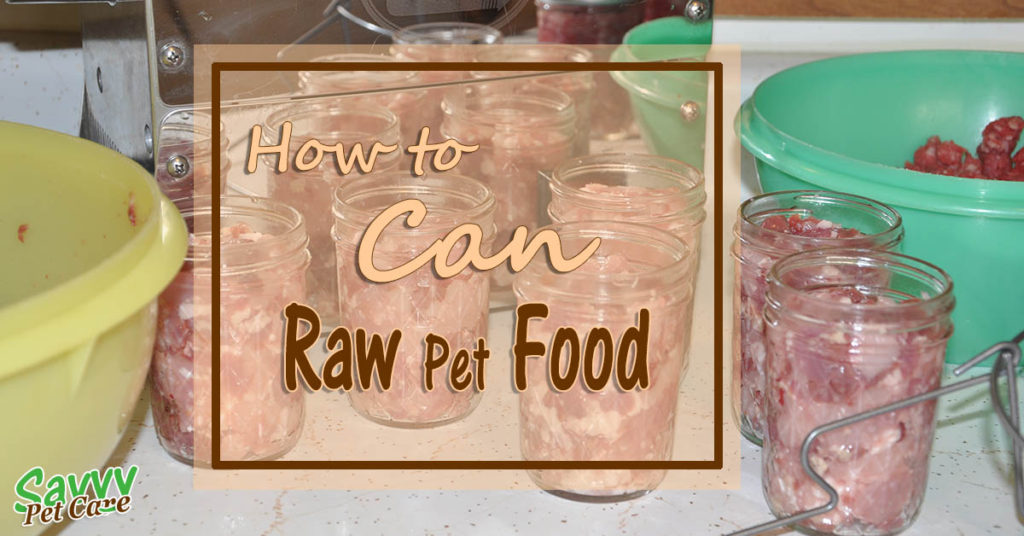 When we were evacuated last September for the Butte Fire, I had just run out of homemade raw. Even if I had frozen raw, it would have been a hassle to keep it and prepare it during the evacuation.
When we were evacuated last September for the Butte Fire, I had just run out of homemade raw. Even if I had frozen raw, it would have been a hassle to keep it and prepare it during the evacuation.
I had read lots of articles about the poor quality ingredients in many commercial pet foods so, when I had to go buy something at the store, I agonized over what to get. Christy gets severe diarrhea on commercial canned food and I didn’t want to put that added stress on her.
If I had my own canned food on hand, it would have been easy to pop in the cats’ go boxes. It would have been easy to store and feed from the jar. It would’t need heating – yes, I slightly warm my cats’ raw food in the microwave because it is too cold out of the fridge. Cats like their food at mouse body temperature.
Even after the evacuation I didn’t try canning right away. It wasn’t until I decided to attend BlogPaws and take Christy with me that I knew I needed to learn more about how to can raw pet food.
Last week, I told you about some of the benefits of Canning Raw Food. Here are a few more reasons to can raw pet food.
Reasons You Might Want to Can Raw Pet Food
- You aren’t comfortable feeding raw but want to know exactly what is in your pet’s food
- To use to transition your pets to raw
- Your friend or pet sitter is not comfortable feeding raw while you are away
- It’s not practical to take raw food while you are traveling
- To include in your disaster evacuation go boxes
- To entice a raw-fed sick cat to eat (cooked food has more aroma than raw)
- It is fit for human consumption
The idea of canning pet food might be a little misleading. What I learned while researching the process of canning pet food is that you can only the meat without bone or supplements. That’s why it is fit for human consumption. You follow the same procedure you would if canning meat for human use.
I only found one post that discussed canning food for dogs. Those instructions said to cook the meat and vegetables first but I would not can my dog food that way. I would raw pack the meat and vegetables just like I did for my cat food. The temperature reached during pressure canning cooks it so pre-cooking is an unnecessary step.
Steps to Can Raw Pet Food
Preserving food, by whatever method, is serious business. It is important to follow instructions carefully to avoid serious illness. Meat is a low acid food and MUST be processed in a pressure canner, not a boiling water or atmospheric steam canner.
Get Your Supplies Together
- Pressure canner
- Jars
- Lids and rings
- Lid lifter
- Canning funnel
- Jar lifter
- De-bubbler/headspace measurer
- Dish towels
- Bowls
- Large spoons
Prepare Your Jars and Lids
Wash your jars, lids and rings in hot soapy water and rinse well. Check your jars for any imperfections. If you are using the raw-pack method, your jars do not need to be pre-heated. Heating is to prevent breaking when hot food is added. Prepare your lids and rings according to package directions – some need to be pre-heated, some don’t.
Prepare Your Meat
Since you are going to “cook” the meat, you don’t have to worry about bacteria. You can make things really easy for yourself and buy ground meat. I still purchased my meat in bulk and ground it at home since it is more economical that way. I had a beef roast and a pork loin so I ground and canned both. You can also just cut the meat into chunks.
If you see a recipe for canning meat that says to add salt, don’t! The salt is for flavoring meat for humans, not preserving and we don’t want it in the pet food.
If you are making dog food and adding fruit/vegetables, stir them into the raw meat.
Pack your meat into your jars as tightly as possible and try to remove any air pockets. Leave one inch of head space. Do NOT add any liquid. The meat will make it’s own delicious juice.
Wipe the rim of the jar with a damp cloth to be sure it is perfectly clean. Put on the lids and screw the bands on finger tight.
Pressure Canning Your Meat
Be sure to follow the manufacturer’s instructions for more specifics on preparing the canner itself.
- Put 2 to 3 inches of hot water in your canner.
- Place the filled jars on the rack in the canner using the jar lifter.
- Fasten your canner lid securely, leaving the weight off the vent.
- Turn your heat to high, heating until the water boils and steams. Always vent for a full 10 minutes.
- Place the weight on the vent.
- Start timing the process when the pressure gauge indicates that the recommended pressure has been reached or, for canners with no gauge, the weight begins to wiggle. The pressure will depend on your altitude and you’ll find this information in the instructions with your canner.
- Regulate the heat to maintain the pressure at or slightly above the recommendation.
- Processing time for the meat is 75 minutes for pints or 90 minutes for quarts. I recommend pints for cats because you will need to use it within about 3 days once it is opened. I even used half pints since I was making this for just one cat. If you do use half pints, you still need to process for the full 75 minutes.
- When the timed process is complete, turn off the heat and let the canner cool down naturally. This can take up to 45 minutes.
- When the canner is completely depressurized, remove the weight and wait another 10 minutes.
- Unfasten the lid and open it away from you.
- Remove the jars from the canner by lifting them straight up (do not tilt) with the jar lifter and placing them on a rack or folded towel away from drafts. Do not leave them in the hot water to cool. They will fail to seal.
- Do not adjust the rings. Do not try to dump or wipe any water from the lids.
- Leave the bands on the jars until they have cooled completely – up to 24 hours.
- Once completely cool, remove the bands.
- Check each jar to be sure it is sealed by pressing the middle of the lid with your finger. If it springs back, it didn’t seal. Refrigerate any jars that haven’t sealed properly and use within 3 days.
- Wipe the jars with a damp cloth. Some oil may have seeped out during processing. You can replace the cleaned bands or leave them off.
- Label and date your jars. Store them in a cool, dark, dry place for up to one year.
While the meat was processing it smelled so good! As I mentioned above, I did both pork and beef. I filled the jars the same and although the pork looked like it had more fat, it was actually the beef that had more.
Since you can only the meat, you add your supplements when you serve your meat, or meat and vegetables in the case of dog food. This created a bit of a challenge for me. You can buy supplements pre-mixed but I already had my supplements that I use when I make raw so I made my own. I mixed up a batch of supplements (minus the fish oil) that I would use for 3 pounds of meat then calculated how much I would add to one half pint jar that is about 7 ounces of meat and juice.
When I opened the jar, I poured the contents into a bowl, stirred in the supplements and put the unused portion of the meat back in the jar.
All three of my cats love this cooked meat. Looks like I’ll be making another batch soon.
Is pressure canning a new idea for you or do you already use a pressure canner to preserve food for your family? Have you canned or thought about trying to can raw pet food?
Pin It for Later!
Further Reading:






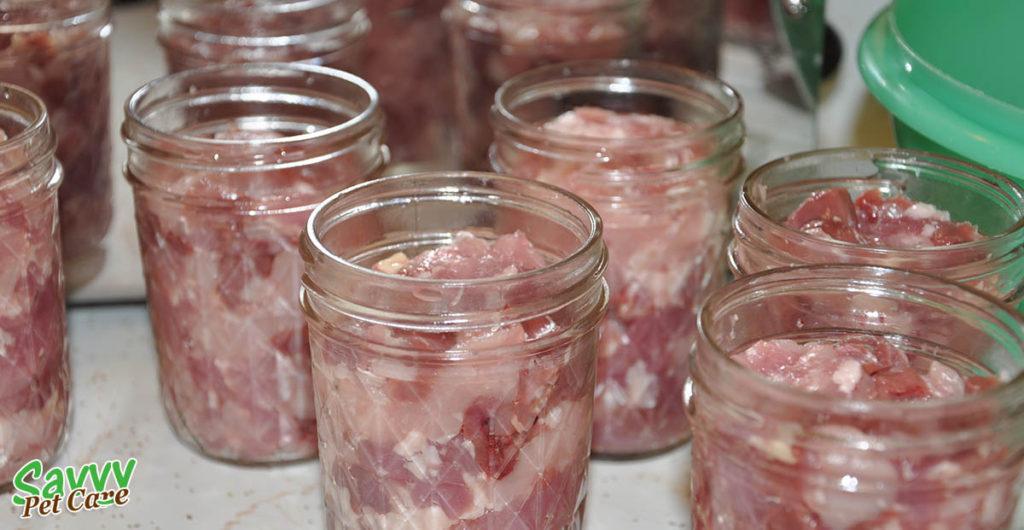
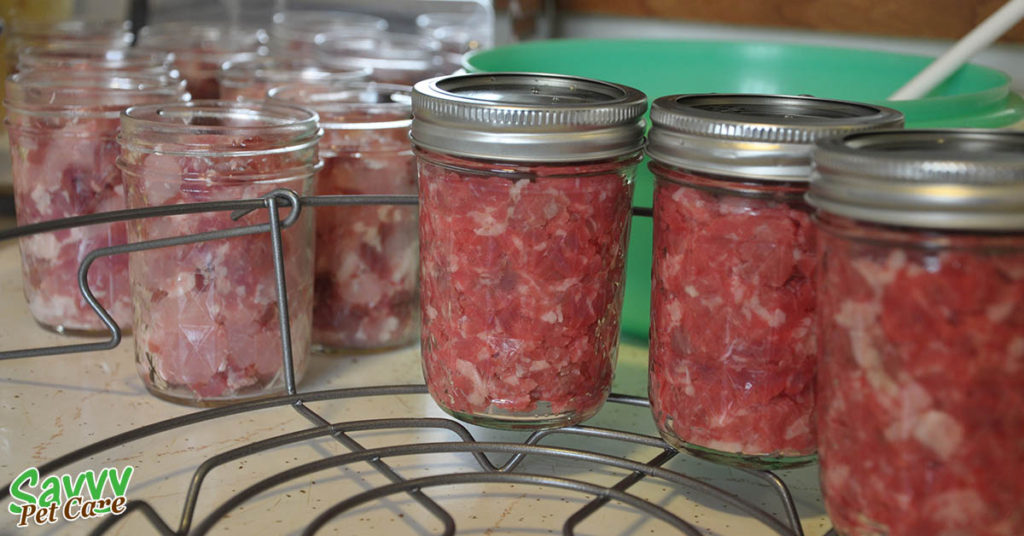
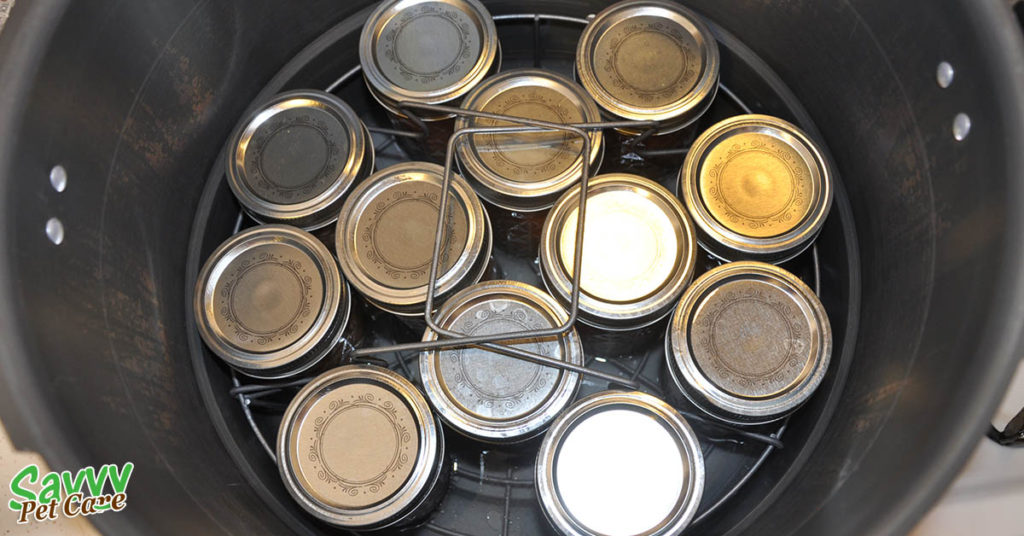
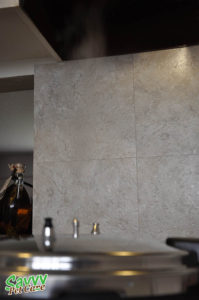
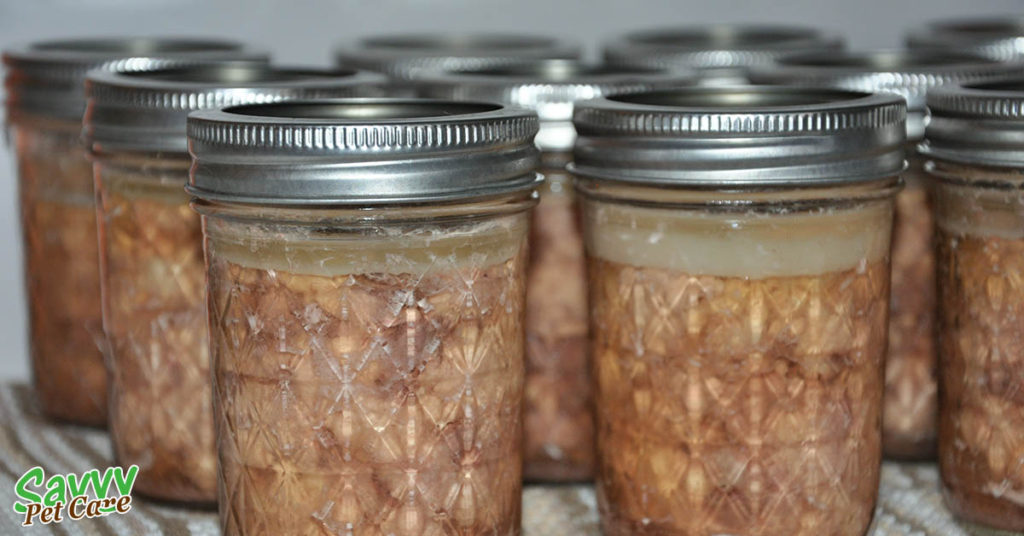
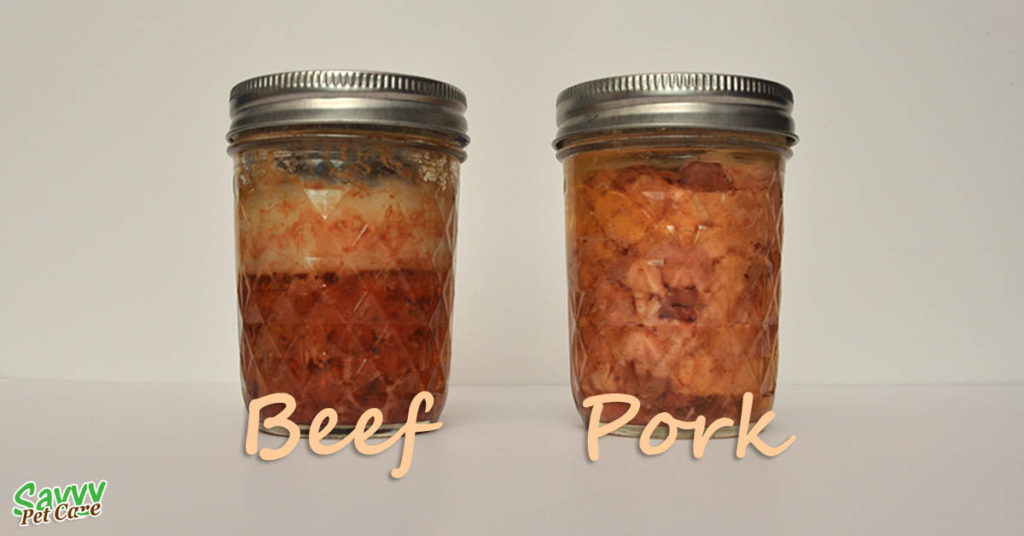
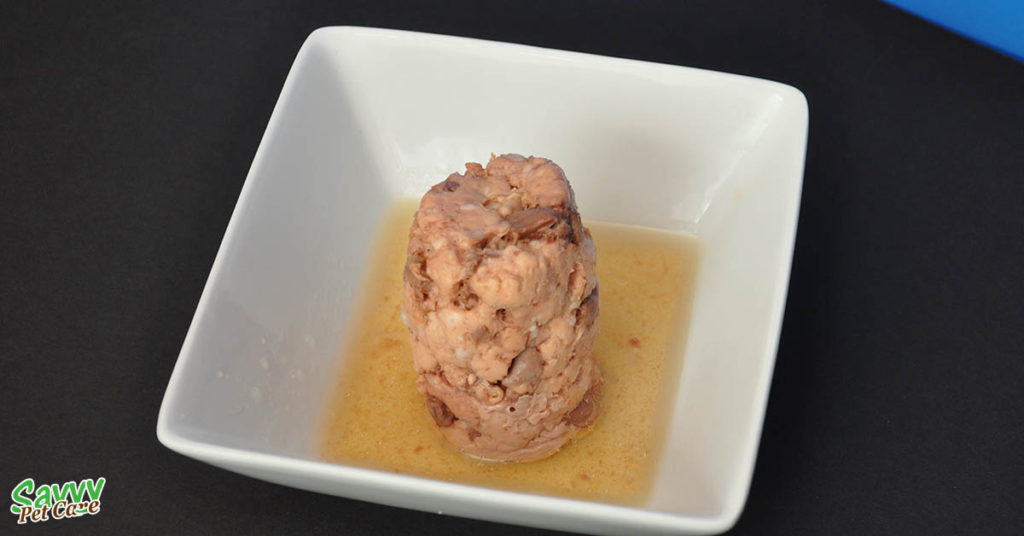
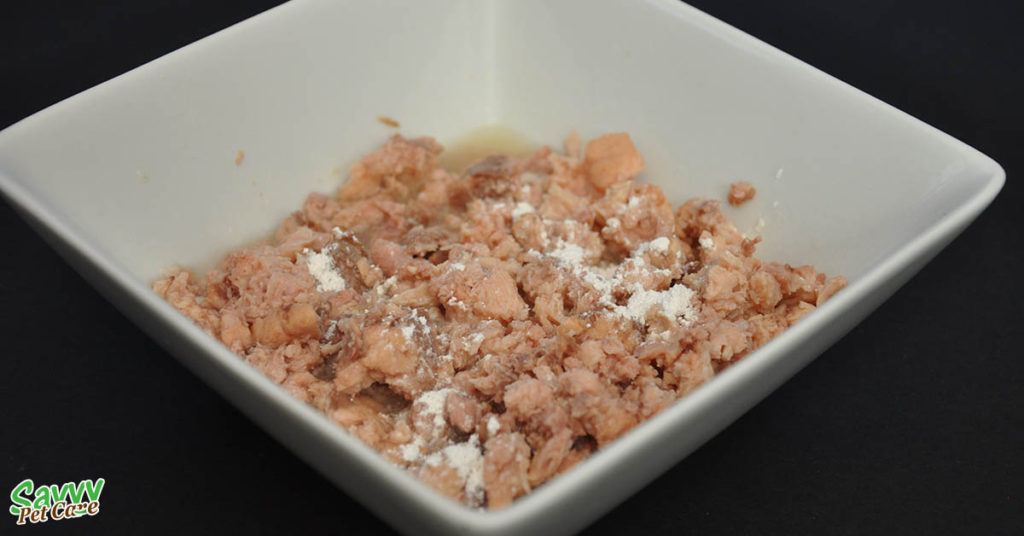
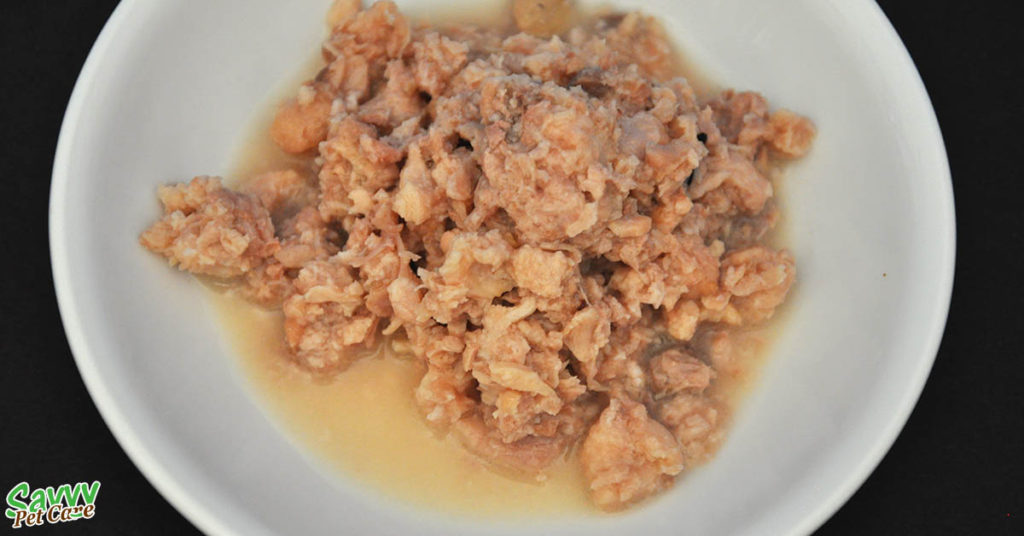
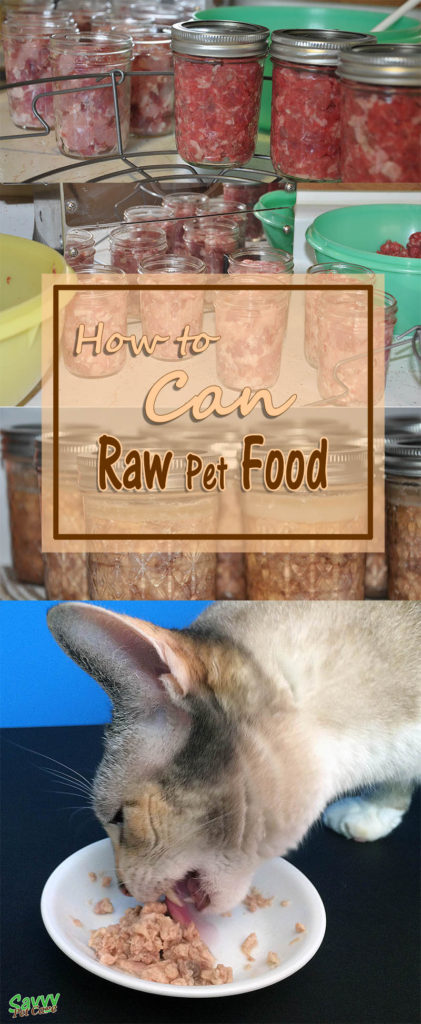

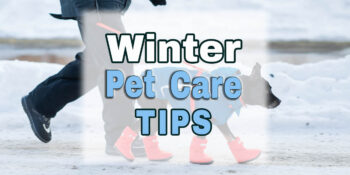



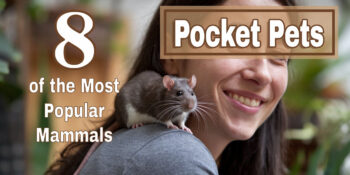



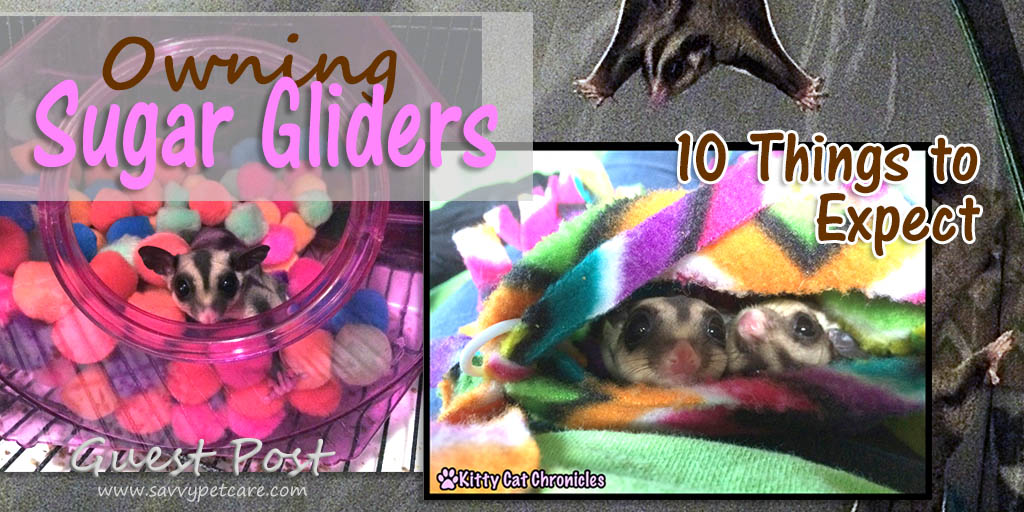



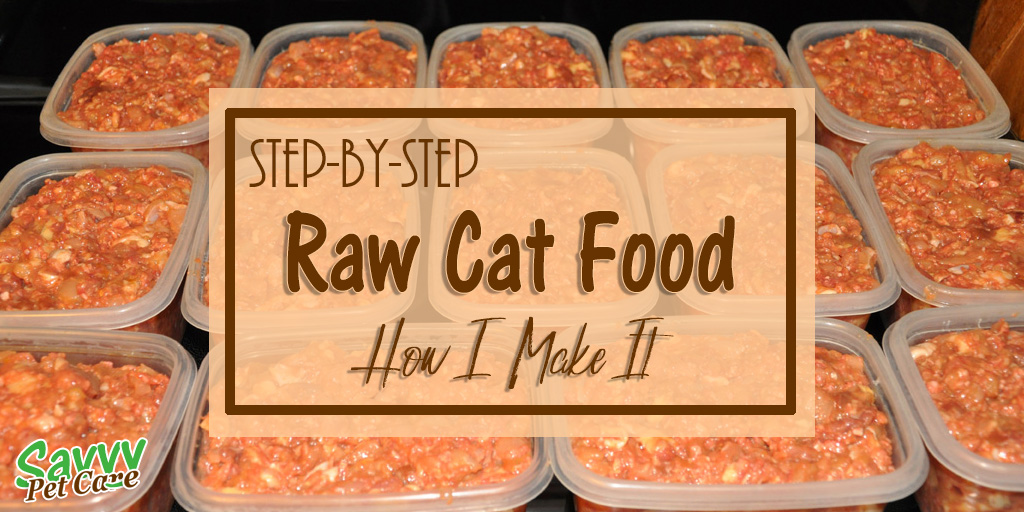
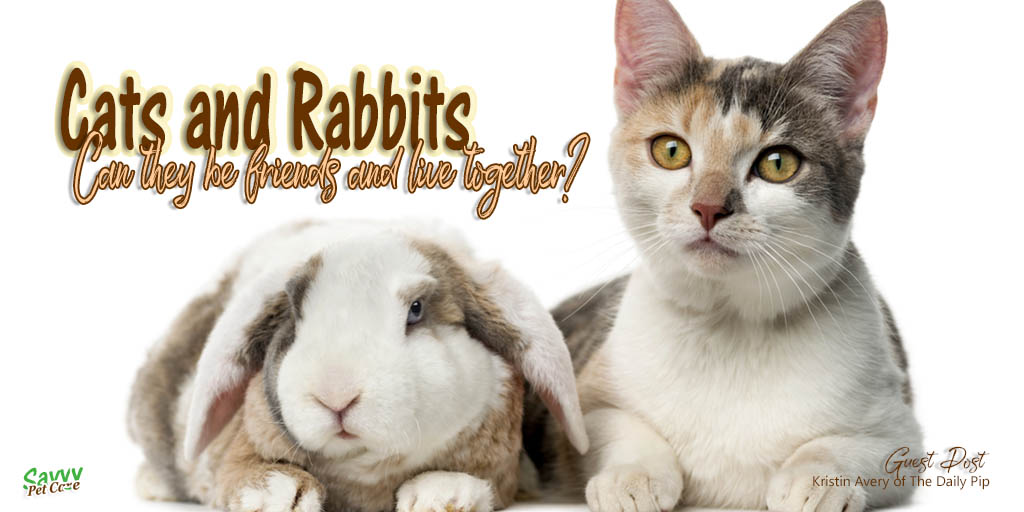

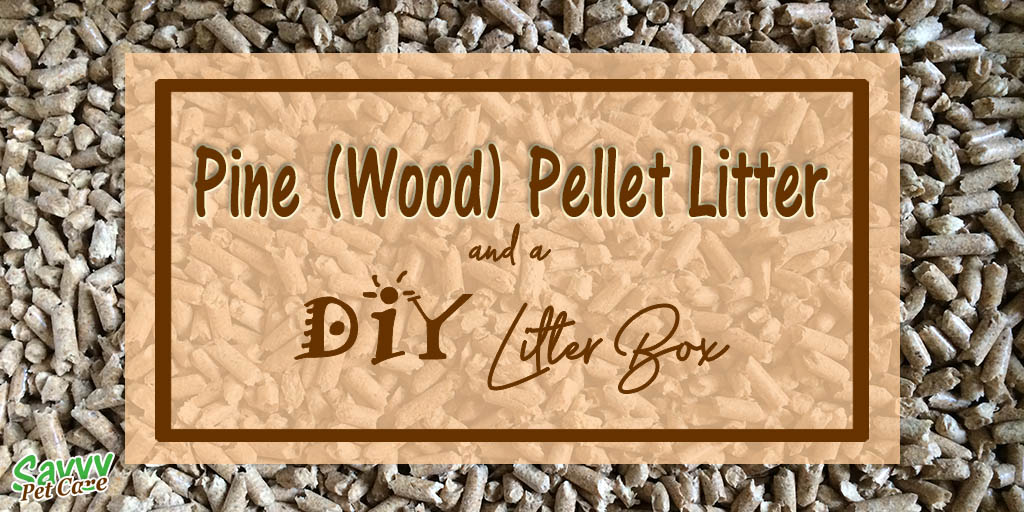

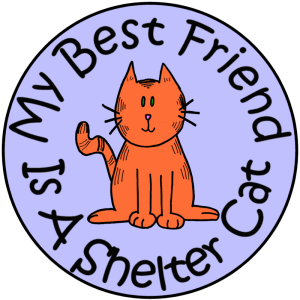
I’ve read your article on canning a couple of times. I have two large dogs and they eat a lot of raw food! I’ve fed premade raw for almost two years. I finally bought a grinder and I’m making my own (one dog cannot handle chunks). I bought an electric Nesco canner to get some shelf stable food and to free up room in the fridge. I have to thaw so much food that it takes up the whole bottom section! Thank you for all of the details including times for pints and quarts. Of course I’ll be doing quarts. Thanks again!
Correct me if wrong!!!! Did you said use only 2 or 3 inches of water? Does that depends on size of the cooker? I just bought a huge 22 litre and not sure how many water. This is my first time using pressure cooker.
I understand that you put ground raw meat with no bones in the can to process, but after the whole process successfully sealed, the meat is no longer raw…it’s cooked “homemade” cat food, correct? I’m confused by the terminology I think?
Also, I don’t plan on eating this food, is there a reason I can NOT add finely ground chicken meat with appropriate amount of fine ground bone (I normally serve them)? Is the chemical compensation of bone making canning ineffective for safe cat cunsumption later or is the “no bone rule” just applicable for it to be considered ‘safe for HUMAN consumption?
I understand not heating the supplements, totally but the bones ground fine enough to what I give them now…I don’t get why the bones must be removed for CAT consumption, unless it’s some chemical interaction of some sort. Otherwise it’s just a rule for the sake of being a rule to meet a checklist for human consumption…if I was was just gonna can a whole raw chicken thigh and then dump it on a plate sprinkled with appropriate supplements everyday I see why that’d be a safety issue churching on a bone that’d shard or whatnot…but I don’t get why meat and bone ground to correct feeding super fine coarseness is a no no for canning cat food to be ever only eaten by a cat?
What am I not understanding?
I delayed replying in order to do more research then got side-tracked. My apologies. I could not find anything about canning for CATS with the bone but I don’t know of a reason you couldn’t. The important thing, of course, is that the bone is ground very fine.
Thank you for posting this! I have a bunch of ground from a gamey tasting old bull. It’s not bad meat- and we are eating the cuts by repeated soaking and slow cooking- but we just don’t like the ground any way. Our dogs love it, so I am planning to can it all for them to free up my freezer. I wanted to raw pack, since I have soooo much!
Glad you found it helpful.
This is a bit confusing to me. If you have ground raw chicken with Bones and then canned it in this manner, you would then have Cooked Meat and Bones that would now be Brittle and harmful to your cat. From what I’ve read and have been doing, most people used the bones for the fresh bone marrow that makes for a balanced diet. So, I would not recommend canning Homemade Raw Cat Food that has Bones in it.
If you read the post, it says to can only the meat without bones. “The idea of canning pet food might be a little misleading. What I learned while researching the process of canning pet food is that you can only the meat without bone or supplements. That’s why it is fit for human consumption. You follow the same procedure you would if canning meat for human use.”
I have never heard canning raw food before but you showed a good method.Normally I do love to cook for my fur babies though I avoid giving direct raw meat or fish to cats. However, your canning method of raw food is interesting to try on. Thank you for sharing with us.
I feed my cats a completely raw diet but having some of their food canned for an emergency is a very reassuring feeling.
Great detailed steps to canning, thanks for breaking it down into easy steps. I’ve never canned anything before, it’s quite a process!
Love & Biscuits,
Dogs Luv Us and We Luv Them
Wow! This looks like a lot of work, but I bet so worth it!
What a great way to prepare food for animals when you feed raw.
Excellent step-by-step post! Just Pinned on my “Mews News” board!
I would like to try Ricky on raw again. This would ensure we have plenty in stock!
Although I am not a raw feeder, I so love and respect that you wrote this post. It is so step by step and I plan to share it. Genius idea to can it.
I need a canner. This is so inspiring and would make feeding in bulk less of a pain in the neck!!!!
Oh my goodness, I admire your ambition and energy. This post makes me tired. But seriously, this is something I would have jumped on in my more youthful days when I used to can like crazy. What a wonderful idea. Thanks for sharing!
I don’t do raw for Kilo the Pug except tiny bits of my salmon sashimi and freeze-dried on top of kibble. I have bottled jam in the past but have never done this full process. Looks like a great option, especially to be prepared for emergencies.
I absolutely LOVE the idea of this and know I would be so happy if I actually did it, but finding the time might be tricky. My mom is a big canner and I’m sure would happily take on this project.
I buy these little raw hamburgers (50grams) and add it to my dogs their meals. It’s just like a little extra treat! It’s so awesome that you cook this yourself for your fur babies!! I have never thought about preparing this myself!
Just read your other blog and it redirected me here. Great! The steps are nothing an amateur can’t do. Thanks for sharing the info.
That really made for some interesting reading! I’m not a wiz in the kitchen by any stretch of the imagination! You really made this sound easy!!
This is so interesting I had no idea you could do this! I feed raw on rotation and find this fascinating.
Wow, I just learnt something new. Thanks for sharing your process. We feed an exclusively raw frozen diet but I’d like to try this sometime. **sharing**
Interesting! We never knew you could can raw food. Though the mom hasn’t started making us our own raw food yet, she will keep this in mind.
We don’t do raw food for the cat but this looks like a healthy alternative! Thanks for sharing!
Great Idea and thanks for sharing, it would make life so much easier
Oh interesting. I wanted to take (human) canning lessons but I missed the jam class.
Canning for your pets is just like canning for yourself. It is fun and rewarding — especially if you have a garden. I highly recommend it.
I’ve always wanted to try canning food for myself — this is such a great idea! I love this!
This is a great post -thank you for the info! I don’t do raw food, but it makes so much sense for those who do to do big batches to cut down on time.
Pingback: Canning Raw Pet Food - Why Do It? - Savvy Pet Care